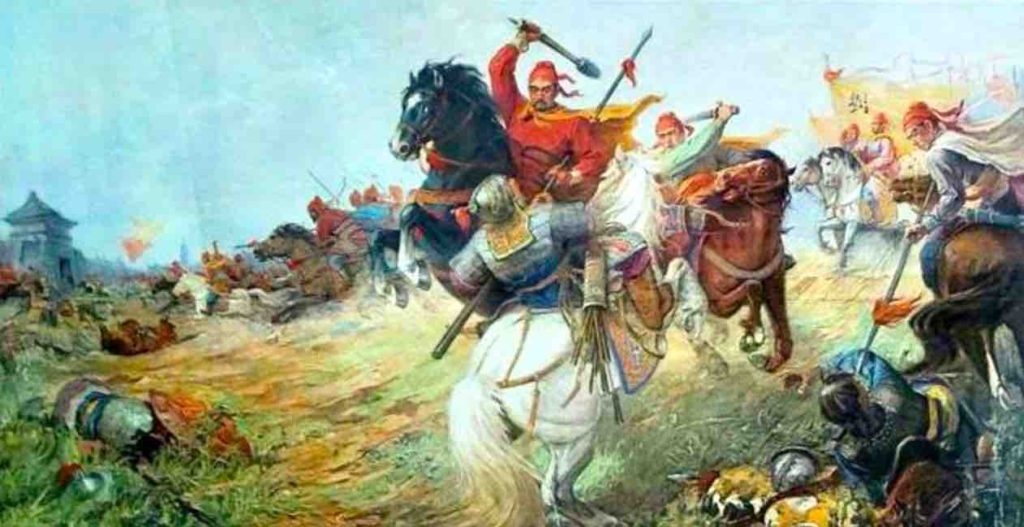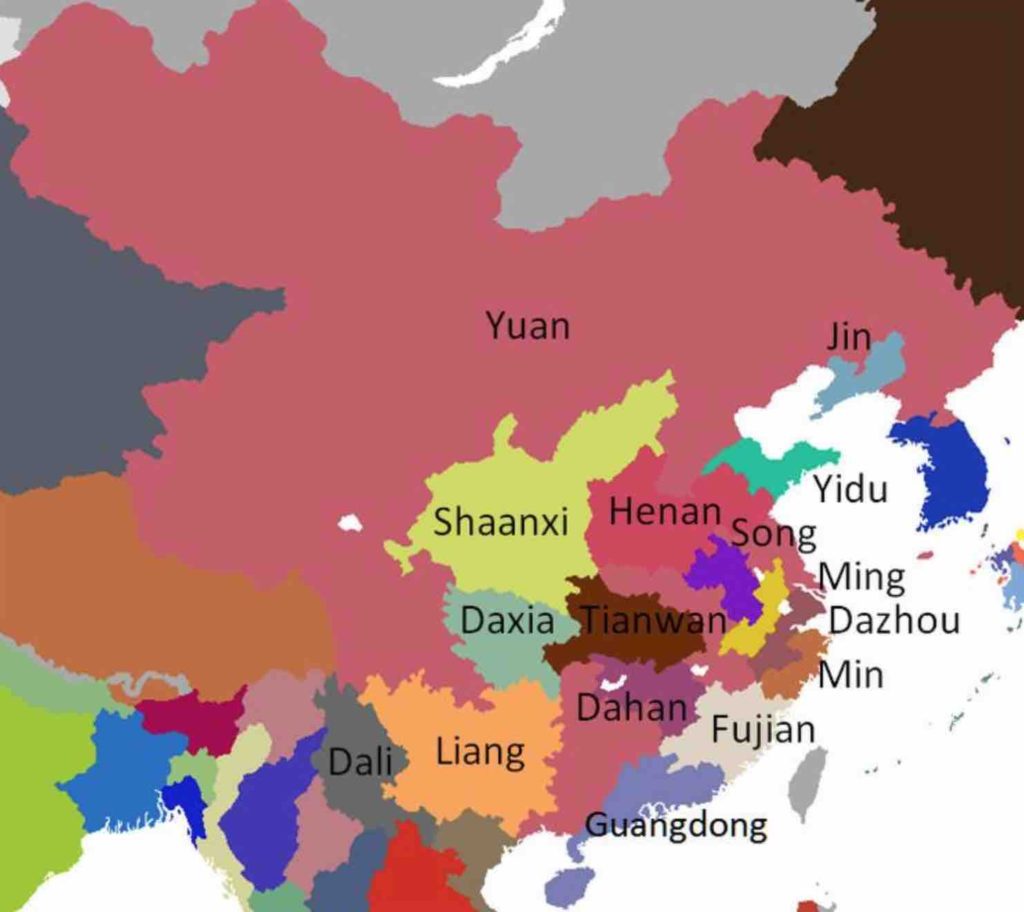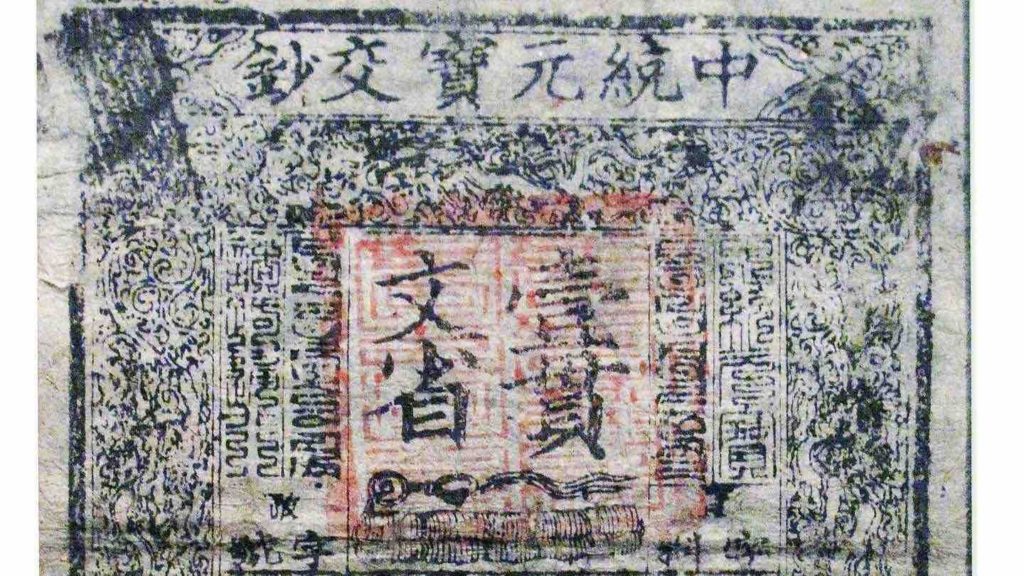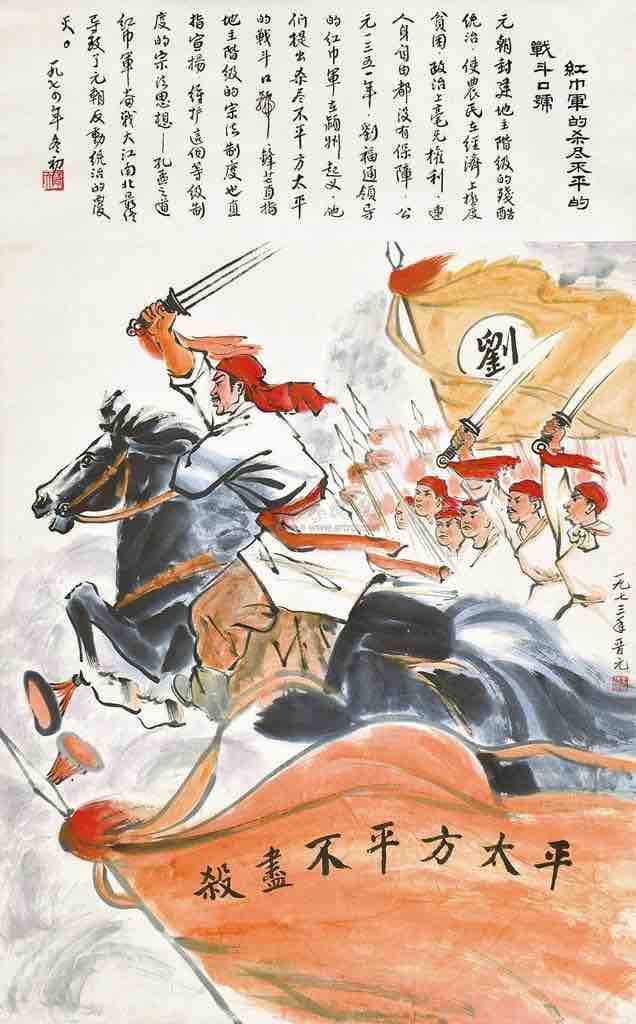
If the emperor and bureaucrats managed the dynasty well enough to feed and clothe the people, who would revolt?
Regime change generally occurs in two ways: peaceful evolution and violent overthrow. Rarely did regime change in China’s 83 dynasties occur peacefully. Rather, rebellions and wars were the beginning of the process that accelerated the decline of a regime and gave vent to people’s dissatisfaction with the current regime.
Sadly, the Mongols did not realize the importance of listening to the people and creating a prosperous and stable society. In 1351, the Red Turban Rebellion broke out.
In terms of the composition of the Red Turban Army, they were mostly peasants who at the bottom of the social ladder. In a way, the outbreak of the Red Turban Rebellion was a concentrated outbreak of the Yuan Dynasty’s many unresolved problems. Just as the cancer cells were left untreated, this eventually led to the emergence of larger problems.
The rebellion that broke out at the end of the Yuan Dynasty is called the Red Turbans Rebellion because of the red turbans worn by the rebels. There is a lot of information about this rebellion on the Internet, but the causes of the rebellion are very vaguely explained.

If you read Wikipedia about the Red Turban Rebellion, you will find that the reason for the rebellion is simply that there were problems within the Yuan Dynasty,which is a very vague explanation. We have looked at many Chinese and English sources about the Red Turban Rebellion and concluded that the reason is not simple.
Collapse of Monetary System
The Yuan Dynasty monetary system went through three periods of stability, chaos, and collapse. At the end of Kublai’s (1215-1294) reign, the expansion of conquests ceased leading to the loss of war gains. Thereafter, the Yuan Dynasty experienced sudden pressure on its finances. To relieve the financial pressure, paper money began to be over-issued, leading to inflationary problems.
In 1287, the Yuan Dynasty undertook its first monetary reform in response to rising prices. The main element of this monetary reform was the issuance of new banknotes in addition to the old ones. The ratio of the new bills to the old bills was 1:5, and the two bills circulated side by side in the market. As a result, the Yuan government’s monetary credit suffered a huge blow.
After Toghon Temür (1320-1370) came to the throne, the Yuan Dynasty entered a period of political stability. However, the paper currency was devalued at an accelerated rate, and inflation was nearly out of control. The over-abundance of paper money led to a decline in the purchasing power of the population, and some farmers with financial difficulties even went to buy illegal salt.

To make matters worse, the Yuan Dynasty chose to issue new banknotes again to alleviate the pressure of financial expenses due to the Yellow River breach. This was the third and last monetary reform in the Yuan’s history, and since then people have lost trust in paper money. In some places, commercial transactions were conducted in exchange for goods.
Hyperinflation led to the collapse of the Yuan Dynasty monetary system and set off a series of simultaneous chain reactions in the political and economic spheres. The people began to distrust the regime’s ability to manage the dynasty well, and the seeds of popular discontent were sown, just waiting for a spark to ignite a fire.
Leadership of Han Shantong and Liu Futong
When we wrote this article, Wikipedia indicated that the leader of the Red Turban Rebellion was Guo Zixing, which is a very serious mistake. Han Shantong and Liu Futong were the leaders, and Guo Zixing announced the rebellion later than Han and Liu. Guo Zixing declared his rebellion in 1352, while Han and Liu started the Red Turbans’ rebellion in 1351. In addition, Guo had declared his army to be under Han Lin’er, son of Han Shan Tong.

The reasons for Liu Futong’s rebellion were different from Han Shantong. According to the “First Survey of the Republic” (Chinese:民国界首一览), Liu broke away from the Yuan Dynasty because of the revenge of officials. To take revenge on Liu Futong, Jia Lu, a river management official, deliberately tried to destroy Liu Futong’s house on the pretext of repairing the Yellow River.
Han Shantong came from a family that believed in the White Lotus. As he grew up, he worked as a farmer while spreading the White Lotus. By the end of the Yuan Dynasty, the White Lotus religion had a large number of followers. So Han had the ability to call for people to riot by religious belief.
After Liu Futong became acquainted with Han Shantong, they began to plot a rebellion. In order to convince the people that it was Heaven’s will for them to rebel, they buried a one-eyed stone statue in the land and let it be known that Heaven had sent us to rebel by digging up the statue.
Therefore, the rebellion would not have happened without the careful leadership of Han Shantong and Liu Futong. Unfortunately, due to the leak of information, Han Shantong was assassinated. Later, Liu Futong found Han Shantong’s son and crowned him king, and called all the rebels to overthrow the Yuan Dynasty.
Natural Disasters
The Yellow River flood of 1344 resulted in a large number of casualties, and the Yuan Dynasty’s water transportation and salt production suffered some damage in the coastal areas. As a result, the imperial court mobilized 260,000 common people to deal with the Yellow River.
During the course of the Yellow River project, corruption was a frequent problem, leading to growing public discontent with the authorities. Economic exploitation and physical exploitation led to boiling discontent among the people, which was one step away from a rebellion.
It was convenient for Han Shantong and Liu Futong to plan the uprising. When they told the people that the revolt was in accordance with the will of heaven by a one-eyed stone statue, the Red Turban Rebellion broke out and became uncontrollable.
In Conclusion
The collapse of the Yuan Dynasty’s monetary system led to total disillusionment with the regime. When paper money became as worthless as toilet paper, it was the eve of a social crisis. The subsequent natural disasters and the emergence of rebel leaders were merely triggers.




